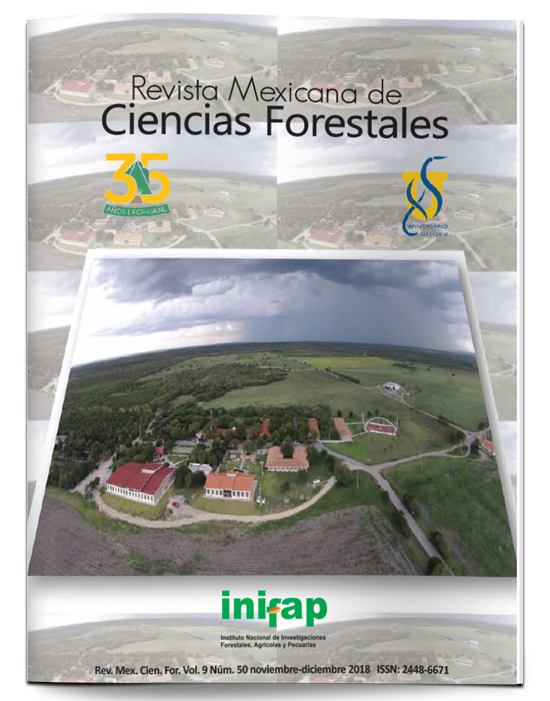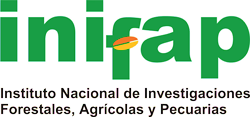Rainfall redistribution and nutrient input in Pinus cooperi C.E. Blanco
DOI:
https://doi.org/10.29298/rmcf.v9i50.237Keywords:
Nutrient input, nutrient deposition, macronutrients, micronutrients, Pinus cooperi C.E. Blanco, precipitationAbstract
Precipitation is one of the most important forms of nutrient input to forest ecosystems; it enters the soil through redistribution pathways: Gross rainfall (Pi), Throughfall (Pd) and Stemflow (Ef). 42 events were evaluated in which the volumes of rainfall were recorded, as well as chemical composition: pH, electric conductivity, macro and micronutrients (Ca, Na, Mg, K, Zn, Mn, Fe and Cu). The objective of the present investigation was to determine the total deposition, incorporation and extraction of nutrients through Pi, Pd and Ef, in addition to the precipitation/deposition relation, to determine the differences in nutrients concentration, a comparison test was applied among the routes already indicated, under a vegetation cover of Pinus cooperi. Ca recorded the highest deposition and incorporation, with 42.89 and 21.74 kg ha⁻¹ respectively. Cu showed the lowest input and accumulated 21.16 and 16.34 g ha⁻¹. The rest of the nutrients presented a behavior from highest to lowest for Pd: Ca> Na> K> Mg> Mn> Fe> Zn> Cu, Pi: Ca> Na> K> Mg> Mn> Zn> Fe> Cu and for Sf: Ca> K> Na>Mg>Mn>Fe>Zn>Cu. This behavior can be associated with the deposition of solid particles on foliage surfaces and branches, phenology, as well as morphological and physiological traits of the species, as well as rainfall chemistry and dry days between rainfall events.
Downloads
Downloads
Published
How to Cite
Issue
Section
License
The authors who publish in Revista Mexicana de Ciencias Forestales accept the following conditions:
In accordance with copyright laws, Revista Mexicana de Ciencias Forestales recognizes and respects the authors’ moral right and ownership of property rights which will be transferred to the journal for dissemination in open access.
All the texts published by Revista Mexicana de Ciencias Forestales –with no exception– are distributed under a Creative Commons License Attribution-NonCommercial 4.0 International (CC BY-NC 4.0), which allows third parties to use the publication as long as the work’s authorship and its first publication in this journal are mentioned
The author(s) can enter into independent and additional contractual agreements for the nonexclusive distribution of the version of the article published in Revista Mexicana de Ciencias Forestales (for example, include it into an institutional repository or publish it in a book) as long as it is clearly and explicitly indicated that the work was published for the first time in Revista Mexicana de Ciencias Forestales.
For all the above, the authors shall send the form of Letter-transfer of Property Rights for the first publication duly filled in and signed by the author(s). This form must be sent as a PDF file to: ciencia.forestal2@inifap.gob.mx
This work is licensed under a Creative Commons Attribution-Noncommercial 4.0 International license.






